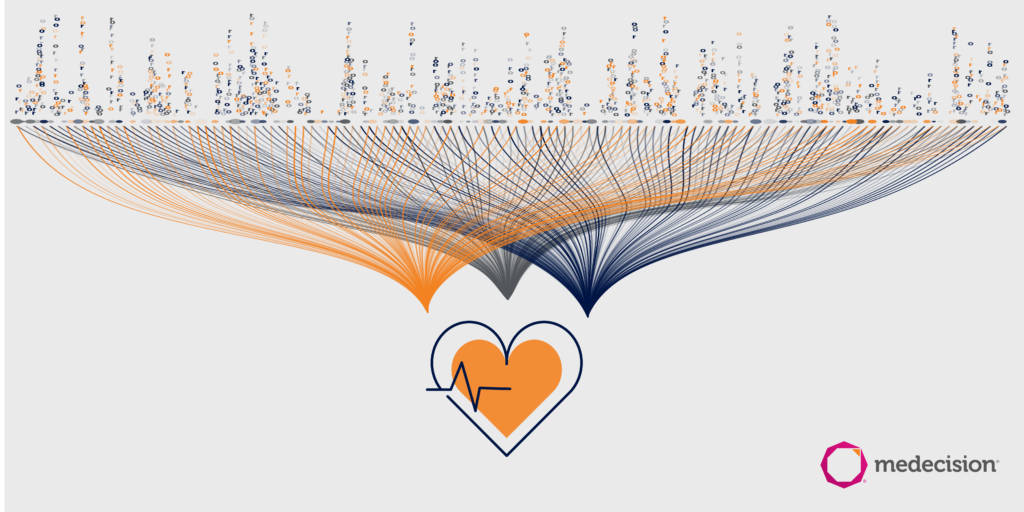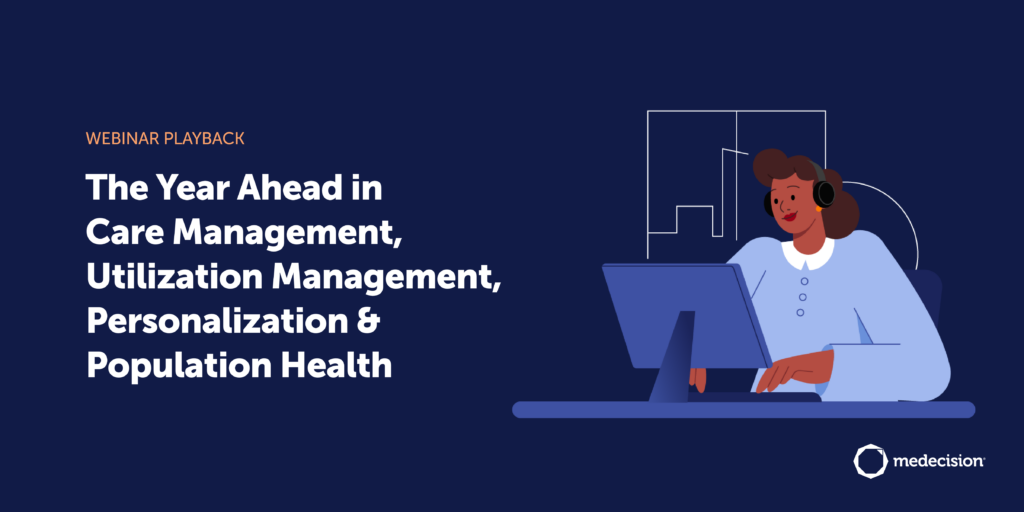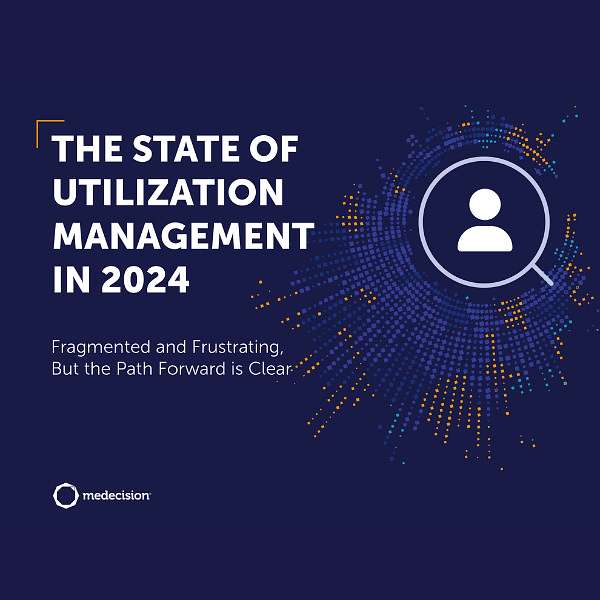
By Terri Steinberg, Chief Medical Officer and Chief Strategy Officer, Medecision
In my last post, we looked at the characteristics of and opportunities afforded by a modern data platform. What, though, does such a transformative technology look like in practice? Specifically, how might the delivery of healthcare services be transformed by a platform that can actively interact with and respond to real-time data across a clinically-integrated network?
Consider what could happen in a scenario in which you were able to integrate and act on real-time notifications about patient/member admissions and discharges. First, with a modern data platform, you would be able to connect with a source of admissions, discharge, and transfer (ADT) transactions from local hospitals. These data might be streaming from a local health information exchange (HIE) or from a data consolidator. You no longer have to take the time and dedicate the resources to importing and transforming that data after the fact. The modern data platform architecture enables you to receive streamed updates about ADTs in real-time. Indeed, the moment an individual passes through a hospital’s doors — coming or going — your system would receive an update.
Most importantly, based on a variety of data events, modern systems allow actions to be configured. Indeed, what a modern data platform can then do with that real-time update is transformative.
Let’s start with the idea of an enterprise-level rules engine running on the data platform. The rules engine inspects the streamed notification and can perform certain actions automatically when specific criteria are met. Does the individual identified in the notification belong to a specific population of interest? If so, execute one or more population-specific tasks. Such tasks could vary depending on the characteristics of the population in question as well as the character of the notification (i.e., whether it indicated an admission, a discharge, or a transfer). Moreover, the character of the actions to be executed can vary widely. Examples include:
- Notify the individual’s care provider of the admission/discharge/transfer
- Notify the relevant care manager
- Schedule an appointment, if a discharge, to have the individual visit a provider for follow-up
- Schedule a site visit if the individual needs home care or assistance
- Have relevant educational materials printed and sent to the individual or their caregivers
Part of what is transformative in this scenario is that all these actions can be automated and triggered as soon as the data platform’s rules engine detects the streamed ADT information. Another part of what becomes transformative is that the modern data platform can send a message to another system’s application programming interface (API) to initiate an action on that system. Medecision’s Aerial, for example, could send a message to the API on Cerner’s HealtheIntent system, which would cause HealtheIntent to execute an action within its network to wake up a PowerChart rule.
The ability to use APIs to develop comprehensive cross-system workflows beyond the bounds that previously confined the data available in a data warehouse and the ability to interact with external data without the need to import and transform it makes it much easier to expand your clinically integrated network. You can quickly and effectively bring in and take advantage of new services and data sources to meet the needs of the populations you serve.



About The Author: Terri Steinberg, MD, MBA, FACP, FAMIA
As Medecision's Chief Medical and Strategy Officer, Dr. Terri Steinberg is responsible for enhancing Medecision's analytics, clinical informatics and data intelligence capabilities. Dr. Steinberg uses her experience to guide Medecision's implementation of clinical systems for its customers to ensure they achieve optimal workflows and value from our software. As a clinician as well as a software designer, Dr. Steinberg has lectured and consulted extensively on methods to ensure successful technology adoption by physicians and nurses, on the positive impact of technology on safe medication practice, and on the use of technology to drive Population Health Management. Dr. Steinberg was previously the Chief Health Information Officer and Vice President of Population Health Informatics at ChristianaCare, a large multi-entity healthcare organization in Delaware.
More posts by Terri Steinberg, MD, MBA, FACP, FAMIA